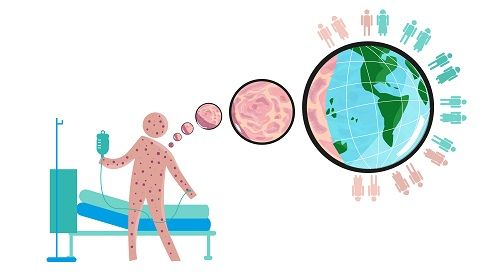Article
Infectious Disease Outbreaks: Finding the Tipping Point
Author(s):
Researchers from the University of Georgia have created a mathematical model in hopes of finding the point at which infectious diseases like Zika explode from an isolated murmur into an outbreak roar.

Hoping to use aggregated data to help public health officials better prepare for infectious disease outbreaks, researchers from the University of Georgia have put together what they call Project AERO. An initial paper from the project applies the notion of “critical slowing down” to infectious disease, a concept of identifying patterns and trends to determine the tipping point of a bubble or outbreak.
It identifies the “tipping point” in the case of infectious diseases like Zika as the moment in which the existing infected subjects are likely to pass the disease along to one or more new subjects. Such a moment presents the risk of outbreak.
Published in Interface, the paper is the result of thousands of simulations. In a mathematical model based around a hypothetical, disease- susceptible population, the team inputted factors such as host age and duration of infection, recovery and transmission rates, and population size. The goal was to find the duration of time between the tipping point and the outbreak itself. Outbreaks typically don’t begin the very instant they feasibly could: there’s often plenty of teetering before the topple.
For predicting the length of the delay between tipping point and actual outbreak, the most important factors they identified were “the speed with which the pathogen's basic reproductive ratio increases” and “the rate at which infection is introduced from outside the population.” The higher the speed and introduction rate, the shorter the delay.
"Once we understand this waiting time, we can learn from past epidemics," researcher Christopher J. Dibble explains in a press release. “If we had an epidemic in March, for instance, it's really tempting to assume that something must have happened in February or January to cause this population to change in a way that allowed it to experience this outbreak. But the problem is that the important change might have happened well before that.”
The team is quick to point out that the goal of this research isn’t so much to try to curb outbreaks (by the time the tipping point has been reached they may be inevitable) as it is to give public health officials ample time to prepare for the months ahead. Though initially it won’t be easy to pin down clear cut, exact timeframes, the work can provide a range of likelihood for when the little hum will become a full-on roar. Hopefully, by removing the suddenness of an infectious disease outbreak, officials will be able to mitigate its most devastating effects.
Related Coverage:
Zika Is the Hottest Topic at IDWeek
Live Attenuated Flu Vaccine Is Safe for Kids with Asthma, Study Finds





